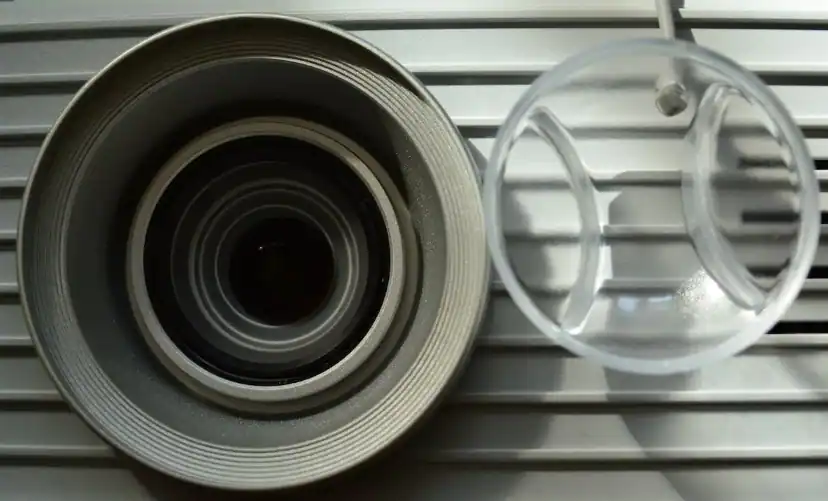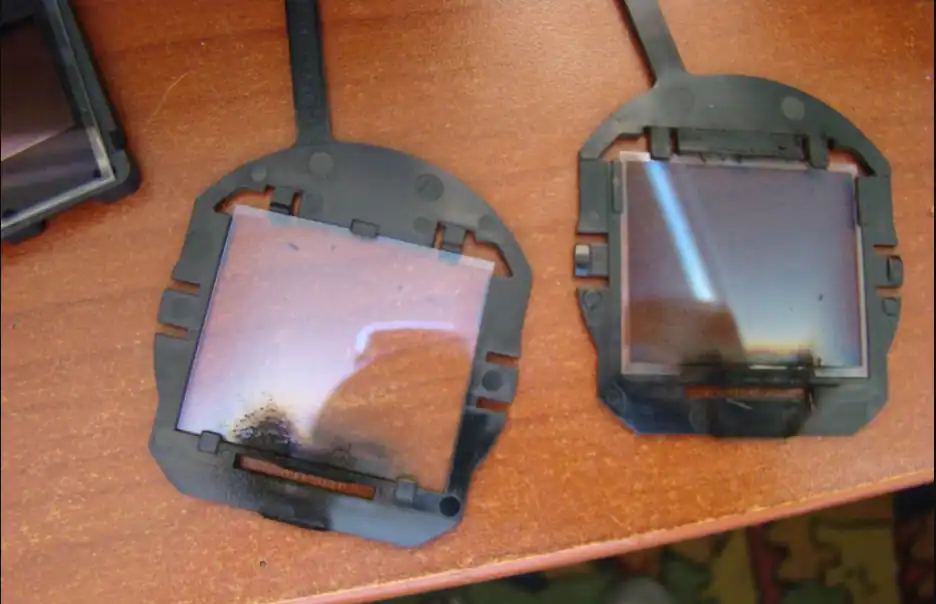Have you ever wondered how long do projector bulbs last? The answer is: it depends. This article will explain how to find out how long projector bulbs last.
Projector bulbs play a vital role in the performance and longevity of your projector. As an essential component, it’s crucial to understand how long projector bulbs typically last and the factors that can affect their lifespan.
In this article, we will delve into the topic, providing you with valuable insights to help you make informed decisions regarding your projector bulb replacements.
What are Projector Bulbs?
To start, let’s explore the fundamentals of projector bulbs. Projector bulbs, also known as projector lamps, are specialized light sources that provide the necessary illumination for your projector to display images and videos. These bulbs use advanced technologies, such as metal halide or LED, to generate intense light that passes through the projector’s optics, ultimately projecting the image onto a screen or surface.

In other words, Projector bulbs are the light sources that are used in projectors. These bulbs have three basic functions – they provide the light that makes the images on the screen, they offer higher contrast to the optical system that makes the image appear clear and bright, and they provide a consistent color temperature that does not vary over time.
How Does a Projector Bulb Work?
Understanding how a projector bulb works is essential for anyone seeking to maximize their projector’s performance. Projector bulbs, also known as projector lamps, are the powerhouse behind the vibrant and captivating images projected on screens or surfaces. In this article, we will delve into the inner workings of projector bulbs, shedding light on the fascinating technology that brings your visuals to life.
The Anatomy of a Projector Bulb:
- Arc Tube: The heart of the projector bulb is the arc tube, a small quartz container that holds a high-pressure gas, usually mercury vapor, along with metal halides. When an electric current passes through the arc tube, it ignites the gas, initiating the production of light.
- Electrodes: Positioned at each end of the arc tube, the electrodes play a crucial role in the bulb’s operation. They serve as the points of contact for the electric current, generating the necessary energy to ignite and sustain the arc.
- Reflector: Surrounding the arc tube is a reflector, typically made of metal or ceramic, which helps direct and focus the light generated by the arc. The reflector’s design ensures that the maximum amount of light is projected through the projector’s optics and onto the screen.
- Filament: In some projector bulbs, particularly those utilizing incandescent technology, a filament is present within the arc tube. The filament acts as a secondary light source, emitting light as it heats up due to the electrical current passing through it.
The Ignition Process:
When the projector is powered on, the bulb goes through an ignition process to initiate the generation of light. Here’s a step-by-step breakdown of how the ignition process occurs:
- Current Flow: When the projector is turned on, an electrical current flows through the electrodes, creating an electric arc within the arc tube.
- Ionization: As the electric arc forms, it heats the gas mixture inside the arc tube, causing the metal halides and mercury vapor to ionize. Ionization is the process of transforming the gas molecules into a plasma state.
- UV Light Generation: Once ionized, the plasma releases a significant amount of ultraviolet (UV) light. UV light falls outside the visible spectrum and is not suitable for direct projection.
- Phosphor Coating: To convert the UV light into visible light, the inner surface of the bulb is coated with phosphors. These phosphors are designed to absorb UV light and re-emit it as visible light.
- Visible Light Emission: As the UV light interacts with the phosphor coating, it undergoes a process called fluorescence, where it is converted into visible light in various colors, depending on the specific phosphors used.
Related: Learn All About Projector Specs
How Long Do Projector Bulbs Last?
Projectors are a great way to watch movies, videos, and other media in a large room. They can also be used to project PowerPoint presentations or images on a screen. The bulbs in these projectors can last for years, but eventually, they will burn out.
The lifespan of the bulbs that are used in projectors varies based on the type of bulb used in the projector. Some types of bulbs burn out quickly while others last for a very long time.
There are many factors that affect the life span of a projector. Let’s first discuss the types of projector bulbs or lamps.
Different Types of Projector Bulbs or Lamps: #Affecting Lifespan
There are several different kinds of projectors, including LCD projectors, DLP projectors, and rear projection projectors. Each type uses different methods or bulbs to produce light. The lifespan of the projector lamps is depended upon the type of bulbs that are used in your projector. Projectors have four different types of bulbs as below:

Metal Halide Projector Lamps
Metal halide lamps are still one of the most cost-saving – widely used light sources for projectors. They can provide high brightness for projection displays, and they can operate on a low voltage which makes them extremely energy-efficient. It uses High-intensity discharge lamps (HID) technology to make efficient light to the projector.
A metal halide lamp is made up of two parts. The first part is the arc tube which is filled with the gaseous mixture. The second part is the outer casing that holds the arc tube and has the power supply attached to it. The outer casing is usually made of quartz and fused silica. It is coated with aluminum oxide or borosilicate glass.
Metal Halide lights have a better lifespan relative to old technology like incandescent lights but they usually only last 2,000 hours to 5,000 hours which is a short lifespan compared to LED.
UHP Projector Lamps
UHP stands for Ultra High Performance Lamps. These lamps have been created as an energy-efficient alternative to metal halide lamps. These are ultra-high-pressure mercury vapor lamps. Metal halide lamps are expensive, and they require maintenance.
On the other hand, UHPs cost less than metal halides, and they require less maintenance. Each type of lamp uses a different method of lighting up the film or slide. UHP projector has high-pressure mercury Arc lamps which are based on electric-arc technology and capable to produce very intense light.
There are also several advantages of using UHP projector lamps. First, the image quality is much better. Also, the lamps last longer. Lastly, it is very energy efficient. If you want a better picture, you should buy a projector lamp with a higher wattage.
The UHP lamp is used mainly in digital cinema projection systems, large-scale television and advertising screens, and large-format projection.
LED Projector Lamps
There are various types of projection lamps available. However, LED projection lamps are the best to use. These lamps use light-emitting diodes (LEDs) instead of traditional incandescent bulbs. LED projectors are far more efficient than conventional lighting, and they can last for 5 years or longer.

Most projectors have a life span of around 5,000 hours. These lamps are cheaper and safer. They are cheaper because they have fewer moving parts, which makes them more durable. They are safer because they do not generate much heat.
Many people prefer LED projectors because they are very affordable. There is a wide range of options with this technology, and you can get a suitable lamp for your needs.
Laser Projector Lamps
With a laser lamp, the image quality is much better than the older types of lamps. The new type of lamps is much less likely to burn out and require far less maintenance. Laser lamps have a lifetime of 30,000 hours while traditional bulbs only last 3000-5000 hours.

This lamp is manufactured to make projections as accurate as possible. This is done by using a laser as the light source. The main benefit of laser lamps is that they allow you to project extremely bright images without causing damage to the screen or damaging the image projection. They can create images of up to 10,000 lumens on a screen which is very impressive.
Other Factors: #Affecting Lifespan
Several other factors contribute to the longevity of projector bulbs. Understanding these factors can help you maximize the lifespan of your bulb and avoid premature burnout. Here are the key factors to consider:
Usage Time
The number of hours your projector is in use directly impacts the bulb’s lifespan. Regularly monitoring and limiting the usage time can help extend the bulb’s longevity.
Environmental Conditions
The operating environment also plays a significant role. Projectors used in dusty or humid environments may experience reduced bulb life. It’s advisable to keep the projector in a clean and well-ventilated space.
Power Cycles
Frequent on/off cycles can strain the projector bulb. It is recommended to avoid unnecessary power cycling to prevent accelerated wear on the bulb.
Quality of Bulb

The quality and manufacturer of the bulb can influence its lifespan. Opting for reputable brands and high-quality bulbs can often result in longer-lasting performance.
Maintenance and Cleaning
Regular maintenance and proper cleaning of the projector, especially the air filters, can help maintain optimal operating conditions and extend the bulb’s life.

Now, How Long do Projector Bulbs Last?
Projector bulbs can last a long time if they are cleaned regularly and the internal parts are kept clean. Projectors that are used in business settings usually have a lifespan of 3,000 hours or 5,000 hours. Projectors that are used in classrooms tend to have a shorter lifespan. These lamps are usually rated at around 2,000 hours.
The number of hours the lamps in these projectors typically last is related to the amount of heat generated by the bulb. Projectors that have shorter lamp lives are likely to generate more heat than those with longer lifespans.
Average Lifespan of Projector Bulbs or Lamps: An Overview
| Bulb Type | Technology | Lifespan (Hours) | Lifespan (Months) |
| Metal Halide Lamps | High-intensity discharge lamps (HID) | 3,000 up to 5,000 | ~ 4 up to 7 |
| UHD Lamps | Electric Arc technology | 5,000 up to 20,000 | ~ 7 up to 27 |
| Laser Projector Lamps | RGB laser beams | 20,000 up to 30,000 | ~ 27 up to 41 |
| LED Lamps | light-emitting diodes technology | 20,000 up to 60,000 | ~ 27 up to 82 |
How Do the Projector Lamps Affect Image Quality?
When you buy a projector, you will need a projector lamp. You will also need a lamp with good quality and high lumens. Projector lamps affect image quality, which means that you will be able to see more detail when you watch movies. If you want to watch a good movie with your family, you should choose the right projector lamp. The projector lamp should have enough lumens so that you can watch a good movie without strain.
Projector Bulbs and Brightness
Projection lamps are used to project images on a screen. It is very important to understand the types of projection lamps available. Projection lamps are used for projecting images on a screen. Some of the common types of projection lamps include but are not limited to, the following: LED lamps, Metal Halide lamps, laser lamps, and Philips UHD lamps.
Projector bulbs offer different color temperatures and brightness levels, allowing users to adjust the visual characteristics according to their preferences or specific viewing requirements. The color temperature refers to the perceived warmth or coolness of the light emitted by the bulb.
Higher color temperatures result in cooler tones, while lower color temperatures produce warmer tones. Brightness, measured in lumens, determines the intensity of the projected image. Higher brightness levels are often desirable for larger screens or well-lit environments. Video projectors for home theaters typically have a 2,000-lumen brightness.
How do You know if Projector Lamp needs replacing?
To anticipate when a projector bulb is nearing the end of its life, it’s essential to be aware of the warning signs. Some common indicators of a failing bulb include:
Signs of a Failing Projector Bulb:
Dimming or Flickering
If you notice a significant decrease in brightness or flickering of the projected image, it may indicate that the bulb is approaching the end of its lifespan.
Color Distortion
Aged bulbs may exhibit color imbalances, such as a yellowish or greenish tint. This distortion can affect the quality and accuracy of the projected image.
Warning Messages
Many projectors are equipped with bulb replacement indicators or error messages that appear when the bulb is reaching its end. Pay attention to these alerts.
Preventions To Extend Projector Bulbs Lifespan!
While projector bulbs have a limited lifespan, there are measures you can take to extend their longevity:

Maintenance & Care:
Projector lamps need to be cleaned and maintained regularly to avoid damage to the lenses. A lamp that is dirty may result in blurry pictures. You can simply wipe the lenses with a dry cloth. You can also remove debris from the lenses with a Q-tip. You can use a small amount of lens cleaner. Never put your projector bulbs in a dishwasher.
Reduce Frequency of use:
A projector bulb uses much more electricity than a standard bulb. If you use the projector several hours a day for long periods of time, this can have a negative effect on the lamp. This is because the heat that is generated can shorten the life of the bulb.
To make sure you get the best life out of your projector bulb, you should only turn it on when you need it. This will extend the life of the bulb.
Proper Ventilation:
Ensure the projector has sufficient airflow to prevent overheating. Dusting the vents regularly and keeping them unobstructed can help maintain optimal operating temperatures.
Avoid using in extreme weather conditions:
You should take care of your projector if you want to use it for a long time. Always make sure to protect it from extreme weather conditions. In case it gets too hot or too cold, don’t turn on the projector.
If you expose the bulb to extreme temperatures, you will shorten its lifespan. This is true no matter what brand of projector you have. The longer you expose the bulb to extreme temperatures, the sooner it will fail.
Check Polarizers & Air Filter Regularly:
When you using a projector, you should check its air filter every time you turn it on. It is very important to clean or replace the projector’s air filter regularly because it will help the projector to operate properly.

The projector’s filter also helps the lamp’s life. You should also check the polarizer on a regular basis. A dirty polarizer can cause the projector to heat up and overheat. This may shorten the life of the bulb.
Economy Mode Feature
Many brands and models of projectors have the economy mode feature. This feature can save you a lot of money if you run your projector constantly during the day. If you run your projector while watching movies or playing games, it will use up a lot of energy.
If you have an expensive projector, it’s important to save money on power by turning its economy mode on. It will let you save energy while watching movies or playing games. The use of economy mode reduces the brightness of the projector but it will increase the projector’s life span.

Avoid Moving the Projector:
Frequent movements and vibrations can cause premature wear on the bulb. Minimize unnecessary relocation to reduce the risk of damage.
Prevent it From Getting Overheat
If you use a projector for many years, it is important that you check its projector bulbs regularly. The main reason for this is that a dirty projector bulb can cause the projector to overheat and shorten its lifespan of the projector bulb.
There are many factors that can affect the lifespan of a projector bulb. Some of these include heat and moisture. The main reason for overheating is that there is something wrong with the cooling system. The projector’s fan won’t spin or it might be damaged.
You can prevent overheating by using a small fan to move air through the projector. This will ensure that the parts of the projector stay cool.
You May Also Like:
- What are Projector Dead Pixels?
- Why Projector Has Black Spots on Screen?
- How to Troubleshoot Shadow on a Projector?
- How Many Watts Does a Projector Use?
FAQs

How long will my projector lamp last?
The life of a projector bulb varies. There is no set amount of time that it will last, but some bulbs do last longer than others. Some bulbs have a life span of 10,000 hours or even 20,000 hours. Apart from that, some projectors have an operating range of 30,000 to 50,000 hours.
What are the advantages of the LED projector?
The benefits of using LED lamps for projecting images include:
1) Lower Cost – Projectors that use LED lamps are very cost-effective.
2) Longer Lamp Life – LEDs offer a longer life than other types of lamps.
3) Smaller Size – LED lamps are smaller than other types of projection lamps.
4) Less Heat – LED lamps emit less heat than other projection lamps.
5) Energy Efficiency – LED lamps use less energy than other projection lamps.
6) Compactness – LED projection lamps are compact and small in size.
7) Easy Installation – LED lamps require only minimal assembly and installation.
8) More Power – LED lamps require less power than other projection lamps.
What does a projector lamp cost?
The cost of the projector lamp is depending on the lamp type. An LED lamp is a better option than a halogen lamp. They offer higher light output, a longer lifespan, lower energy consumption, and a lower heat signature. They range from about $100 – $500 depending on the projector model.
Conclusion
To exactly know – How long do Projector bulbs last, you should check the lamp’s lifetime. The lamp’s lifetime is indicated on the packaging of the bulb or projector manual.
As discussed earlier, the lifespan of a projector bulb can vary depending on multiple factors, including the type of bulb, usage conditions, and maintenance. However, as a general guideline, most projector bulbs have an average lifespan ranging from 3000 to 4,000 hours of use.
So, this estimate can give you an idea of what to expect, but it’s essential to note that it can vary significantly and can go up to even 50,000 hours. Thank You For Reading!
As an experienced Software Engineer in a Projection-Based Technology Company, I love sharing my Knowledge to utilize and help others to learn more about Projectors. Thus one can get the right Projector for their needs.



